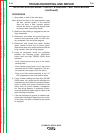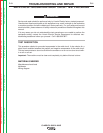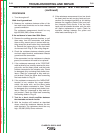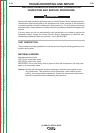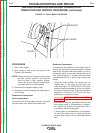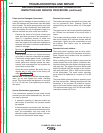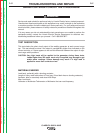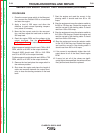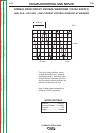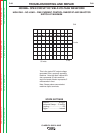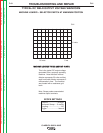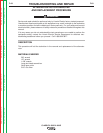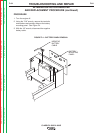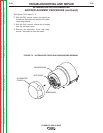
SERIES COIL SHORT CIRCUIT TEST PROCEDURE (continued)
PROCEDURE
1. Place the current range switch in the Max posi-
tion, connect the Classic® 300 to a load bank
and start the engine.
2. Apply a load of 250 amps and allow the
machine to reach normal operating tempera-
ture, (about 30 minutes)
3. Move the fine current control to the max posi-
tion, and then adjust the load bank to obtain a
300 amp load.
4. Read the engine RPM and the voltage at the
output terminals. See the Engine RPM
Adjustment Tests for instructions on how to
check RPM.
Kubota powered models should read 1790 to 1810
RPM, and 34 to 48 VDC at the output terminals.
Classic® 300G should read 1780 to 1810 RPM
and 33 to 42 VDC at the output terminals.
Perkins powered models should read 1650 to 1750
RPM, and 33 to 42 VDC at the output terminals.
5. Remove the load and place the range switch in
the minimum position.
6. Shut down the engine and place the length of
cable and ammeter between the output termi-
nals, or close the shorting contactor on the load
bank.
7. Start the engine and read the current in the
shorting cable. It should read from 95 to 120
Amps.
8. Stop the engine and move the selector switch to
the 80 to 130 Amp tap. Restart the engine and
read the current in the shorting cable. It should
read from 150 to 200 amps.
9. Stop the engine and move the selector switch to
the 120 to 190 Amp tap. Restart the engine and
read the current in the shorting cable. It should
read from 240 to 300 amps.
10. Stop the engine and move the selector switch
to the 160 to 240 Amp tap. Restart the engine
and read the current in the shorting cable. It
should read from 330 to 410 amps.
11. If the current is considerably higher than indi-
cated above for all of the tests, check engine
RPM.
12. If some, but not all of the values are signifi-
cantly higher than specified, the series coils are
likely shorted and should be replaced.
TROUBLESHOOTING AND REPAIR
F-58 F-58
CLASSIC® 300D & 300G
Return to Section TOC Return to Section TOC Return to Section TOC Return to Section TOC
Return to Master TOC Return to Master TOC Return to Master TOC Return to Master TOC



